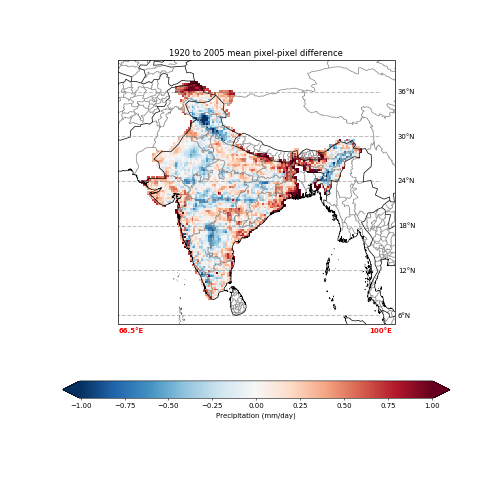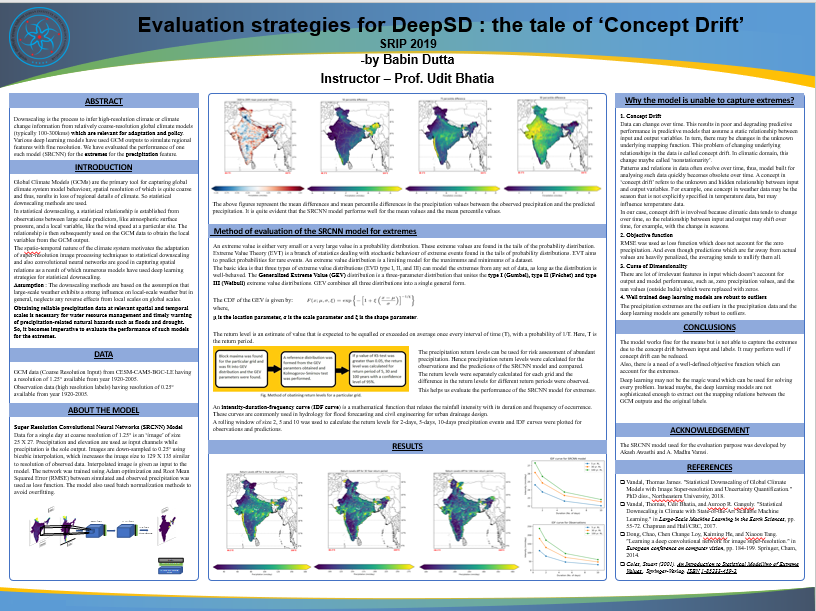
The impacts of climate change are felt by most critical systems, such as infrastructure, ecological systems, and cities. Earth System Models (ESM) are run at spatial resolutions too coarse for assessing effects this localized. Local-scale projections can be obtained using statistical downscaling, a technique which uses historical climate observations to learn a low-resolution to high-resolution mapping. The spatiotemporal nature of the climate system motivates the adaptation of deep learning approaches to statistical downscaling. This project aims to explore novel approaches in the area of machine learning for generating finer resolution projections of climate models.

Downscaling is the process to infer high-resolution climate or climate change information from relatively coarse-resolution global climate models (typically 100-300kms) which are relevant for adaptation and policy. Various deep learning models have used GCM outputs to simulate regional features with fine resolution. We have evaluated the performance of one such model (SRCNN) for the extremes for the precipitation feature.

The structure, interdependence, and fragility of systems are the threeimportant characteristics of a network. Depending on thesecharacteristics, different networks respond differently in case of adisruption. It is not possible to study all possible disturbances that a real-worldnetwork may face because of a large number of possibilities. Hugelosses are faced due to these failures as they cannot be predictedwith certainty. Thus, understanding the responses by performing contingencyanalysis will help us make a network more robust. Significant progress is being made on network resilience. But, welack contingency plans that can help us secure these networks.